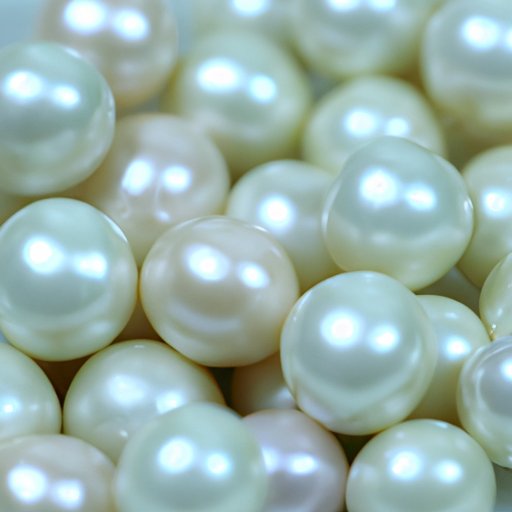
Introduction
Are you searching for ways to identify if your pearl is genuine or not? Pearls are a symbol of opulence and poise, but telling real pearls from fake ones can be challenging even for jewelry experts. Knowing how to distinguish authentic pearls can help in avoiding buying imitations, wasting money, and maximizing your investment. This guide will uncover tips and techniques on how to tell if a pearl is real.
The Tooth Test: How to Determine If Your Pearl Is Real
The tooth test is one of the most straightforward ways to determine whether a pearl is genuine or fake. The method has been used throughout history, and you can rely on it to make a quick check anytime you need to verify a pearl’s authenticity.
To do the tooth test, gently rub the pearl over your teeth. A real pearl should feel gritty or sandy, while fake ones would be smooth and slippery. Genuine pearls are made of numerous layers of nacre that tend to have tiny bumps and grooves that you can quickly feel with your teeth.
Spotting the Fakes: A Guide to Authenticating Pearls
Fake pearls tend to have a perfect, smooth surface, which is a telltale sign of imitation pearls. When you look at genuine pearls under a microscope, they have a distinctive texture with ridges and flaws, which create the pearl’s natural iridescence. Real pearls will also have variations in size and shape, unlike imitation pearls, which have a fixed and identical shape.
Fake pearls are also lighter than real ones, making them feel hollow when you tap them gently. They have less luster than natural pearls, and the colors tend to be uniform and have an artificial appearance. If you notice round and identical patterns in a strand of pearls, then they could be fake.
Real or Imitation: Decoding Pearl Quality and Value
Apart from determining if your pearl is genuine, you should also be aware of the different types of pearls and their varying quality and value. Pearls occur in different colors, from white, pink, black, silver, gold, and peach, and each type has different qualities and values.
Pearls that have high luster and excellent reflection and are round and smooth are typically more valuable. Freshwater pearls, for instance, are cheaper than saltwater pearls because they are more abundant and less symmetrical. Akoya pearls are relatively smaller, but their shine is impressive, compared to Tahitian pearls, which are larger and have a distinct gray or black hue.
The Acid Test: Using Chemistry to Identify Genuine Pearls
The acid test is a reliable method of determining whether a pearl is genuine or fake. The method is not suitable for testing pearls set in valuable jewelry because it requires you to remove a small piece of the pearl.
Take a small piece of pearl and place it in a cup of vinegar. If the pearl is genuine, it should dissolve slightly and release a milky substance that has a slightly acidic scent. If the pearl is fake, it will not dissolve or produce any milky residue.
Uncovering Counterfeits: Expert Tips for Identifying Real Pearls
An expert in pearls suggests that to identify a genuine pearl, consider the weight, surface texture, and drilling marks. Comparing the weight of the pearl to other pearls of the same size can help you gauge its authenticity. A real pearl will feel heavy and dense in comparison to a fake one.
The surface of a genuine pearl should also have irregularities that give it texture and depth, unlike fake pearls, which have a smooth surface. Inspecting the drilling marks can also give you important clues as to whether the pearl is authentic. Authentic pearls should have small drill holes that don’t appear too clean, while fake ones would have distinct or large drill holes.
The Mystery of Pearls Unveiled: A Step-by-Step Guide to Authenticity
In conclusion, testing pearls for authenticity is a relatively simple process, especially if you follow the outlined methods. To ensure proper testing, use various techniques, including the tooth test, acid test, evaluating quality and value, inspecting the weight and surface texture, and consulting with experts to determine whether the pearl is genuine.
You should also consider the type of pearls first before testing for authenticity. Above all, the importance of knowing whether a pearl is real or not cannot be underemphasized, as it prevents you from losing money while ensuring you’re getting the value for your money.
Conclusion
Throughout history, pearls have been a symbol of affluence and grace, and their popularity continues to grow. While fake pearls have flooded the markets, knowing how to verify your pearls’ authenticity can keep you from making a costly mistake. The techniques outlined above, such as the tooth test, acid test, weight, texture, and drilling marks, are easy to follow and will help you distinguish genuine pearls from fake ones. Don’t hesitate to use these methods or consult with experts when in doubt – you’ve got everything you need to test your pearls and make sure they’re the real deal.




